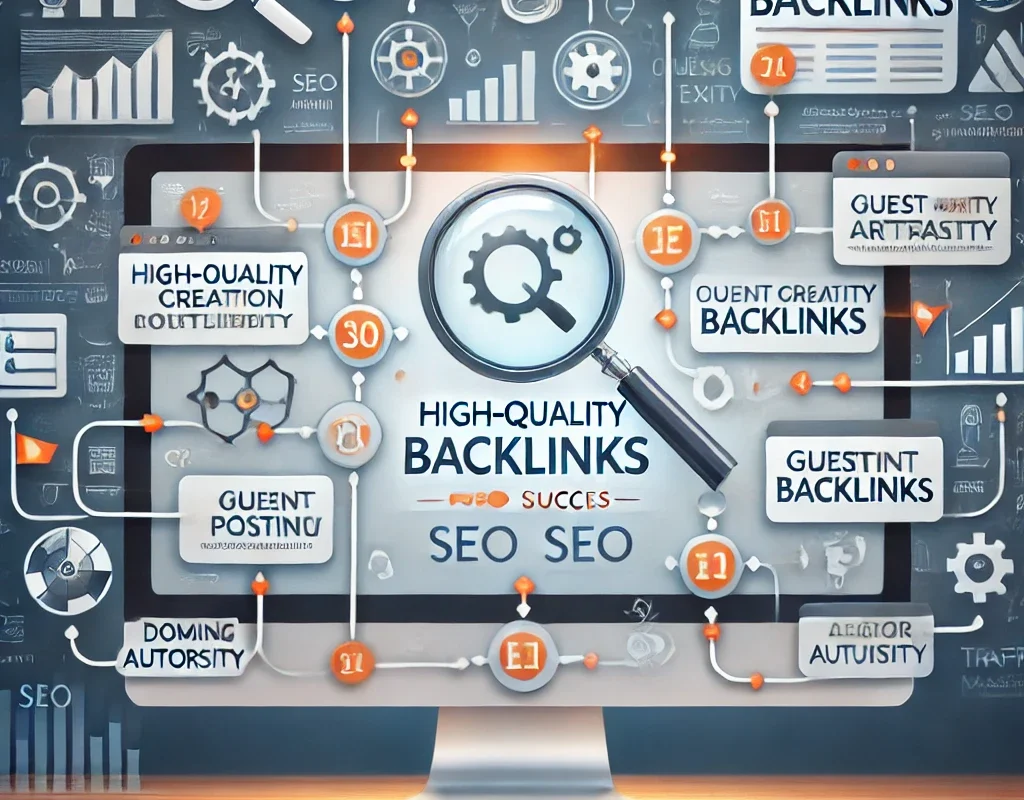Backlinks remain one of the most powerful ranking factors in SEO, but not all backlinks are created equal. Understanding how to build high-quality backlinks for SEO success is essential for achieving long-term growth and improving your site’s visibility in search engines. The strategies and insights in this guide will help you develop a powerful backlink portfolio, driving both traffic and authority to your website.
Introduction to Backlinks
Backlinks, also known as inbound links, are links from one website to another. They serve as a “vote of confidence” in the eyes of search engines like Google, indicating that the content linked to is valuable and trustworthy. The more quality backlinks your website earns, the better it can rank in search engine results pages (SERPs). However, it’s not just about quantity—quality is the real game-changer when it comes to backlinks.
Understanding High-Quality Backlinks
High-quality backlinks come from reputable, authoritative websites that are relevant to your niche or industry. Google values links from established, credible sources far more than random links from low-authority sites. A high-quality backlink has the potential to boost your site’s domain authority, improve organic search visibility, and attract more targeted traffic.
Several factors determine the quality of a backlink, including:
- Domain Authority (DA): The higher the DA of the linking site, the more valuable the backlink.
- Relevance: Links from websites in the same or related industry hold more weight.
- Traffic: Links from high-traffic sites can bring more visitors to your site.
- Anchor Text: Relevant and natural anchor text enhances link value.
By focusing on these characteristics, you can build a powerful backlink profile that contributes significantly to your SEO efforts.
The Importance of Backlinks in SEO
Backlinks are crucial because they act as endorsements from other websites, telling search engines that your content is valuable and authoritative. Google’s algorithm, in particular, heavily factors in the quality and quantity of backlinks when determining where a website should rank. The more high-quality links you have, the higher your chances of ranking at the top of the search results.
Moreover, backlinks can drive referral traffic, bringing in visitors who are genuinely interested in what your site offers. These links can help establish your website as a trusted resource in your industry, which in turn can lead to more organic traffic over time.
Types of Backlinks: Dofollow vs. Nofollow
There are two main types of backlinks: dofollow and nofollow. Understanding the difference between them is key to building a balanced backlink profile.
- Dofollow Backlinks: These are the standard type of backlinks that pass link equity (or “link juice”) from the linking site to the linked site. Dofollow links help improve your site’s SEO performance.
- Nofollow Backlinks: These links contain a “nofollow” attribute, instructing search engines not to pass any link equity. While they don’t directly impact rankings, nofollow links can still bring valuable referral traffic and exposure.
A healthy backlink profile contains a mix of both types, but the primary focus should be on acquiring dofollow links from high-authority sites.
Why Quality Matters Over Quantity
One of the biggest misconceptions about link building is that quantity outweighs quality. It’s better to have a few high-quality backlinks from authoritative sites than to have hundreds of low-quality ones. Google’s algorithms have become highly adept at recognizing link schemes and manipulative practices. Low-quality, spammy links can do more harm than good by leading to penalties or a drop in rankings.
To succeed in link-building, focus on earning natural, organic backlinks from websites that are relevant to your niche. These links will carry more weight and drive long-term value to your site.
How to Identify High-Authority Websites
High-authority websites typically have strong domain metrics, receive significant traffic, and are trusted within their industry. Some ways to identify such sites include:
- Domain Authority Tools: Use tools like Moz, Ahrefs, or SEMrush to check a site’s domain authority.
- Content Quality: Evaluate the content on the site. High-quality, well-researched content is often a sign of authority.
- Backlink Profile: Analyze the site’s existing backlink profile. If it’s being linked to by other reputable sites, it’s likely an authoritative source.
Targeting these websites for backlinks can help you establish credibility and improve your SEO performance.
You Can Also Read : How to Optimize Your Website for Mobile SEO
Organic vs. Paid Backlinks
The allure of paid backlinks can be tempting, especially when looking for quick results. However, paid backlinks can be a double-edged sword.
- Organic Backlinks: These are earned naturally when other websites link to your content because they find it valuable. Organic backlinks are favored by search engines and can significantly boost your rankings.
- Paid Backlinks: While some SEO professionals use paid backlinks, Google explicitly frowns upon purchasing links. If caught, your website could be penalized, leading to a significant loss in rankings.
In the long run, organic backlinks are the safest and most effective way to build a strong backlink profile. Focus on creating valuable content and forming relationships with industry influencers to attract organic links.



